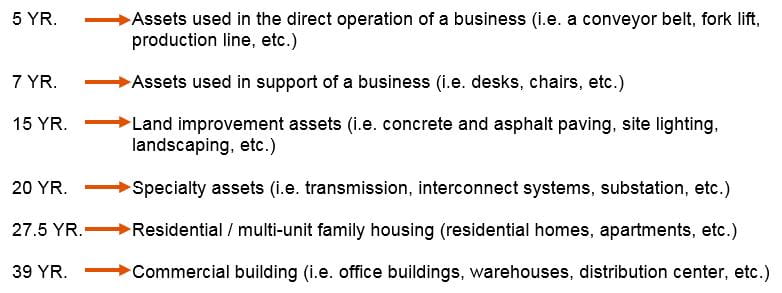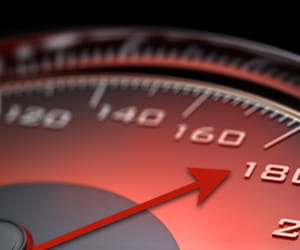Net book value is not the same as fair value

Why does NBV not equal fair value? Because NBV is an accounting exercise: original cost less a depreciation amount set by a tax or book depreciation curve. It does not consider certain factors that would be contemplated in a proper market valuation.
In valuing assets for financial reporting purposes or other purposes that require a market value estimate, it is critical to understand that net book value (NBV) is typically not an appropriate measure of fair value or fair market value for machinery and equipment personal property assets (“M&E” or “Asset”).
To start: Definitions
First let us define several important terms and develop a clear understanding of their place when contemplating the application of NBV as a proxy of fair value for assets.
Net Book Value
“The capitalized cost of an asset less the accounting depreciation taken for financial reporting.” – American Society of Appraisers (ASA), Machinery and Technical Specialties Committee, in “Valuing Machinery and Equipment: The Fundamentals of Appraising Machinery and Technical Assets” (Fourth Edition)
Fair Market Value (IRS)
“The price at which the property would change hands between a willing buyer and a willing seller when the former is not under any compulsion to buy and the latter is not under any compulsion to sell, both parties having reasonable knowledge of relevant facts.” – IRS Revenue Ruling 59-60
Fair Value (Financial Accounting Standards Board, FASB)
“The price that would be received to sell an asset or paid to transfer a liability in an orderly transaction between market participants at the measurement date.” – Accounting Standards Codification (ASC) Topic 820, “Fair Value Measurement”
ASC 805 (“Business Combinations”) further explains: “A fair value measurement assumes the highest and best use of the asset by market participants, considering the use of the asset that is physically possible, legally permissible, and financially feasible at the measurement date. In broad terms, highest and best use refers to the use of an asset by market participants that would maximize the value of the asset or the group of assets within which the asset would be used. Highest and best use is determined based on the use of the asset by market participants, even if the intended use of the asset by the reporting entity is different.”
For this article we will assume that “fair market value” is synonymous with “fair value” because they are defined similarly, and both contemplate similar economic circumstances in the development of a measure of market value.
Normal Useful Life
“The physical life, usually estimated in terms of years, that a new property will actually be used before it is retired from service. A property’s normal useful life relates to how long similar properties actually tend to be used, as opposed to the more theoretical economic life calculation of how long a property can profitably be used.” – ASA Machinery and Technical Specialties Committee, in “Valuing Machinery and Equipment”
NBV vs. fair value
NBV and fair value are distinctly different concepts. NBV is an accounting exercise: original (unadjusted) cost less a depreciation amount set by a tax or book depreciation curve. Accounting depreciation does not consider the following:
- Current reproduction/replacement costs
- Physical condition of the assets
- Improvements or partial retirements made to the assets
- Current utilization of the assets
- Changes in the effective age of the assets
- Functional or economic obsolescence factors
- Salvage value (not in all, but in many cases)
The following three examples related to tax accounting, GAAP accounting, and valuation demonstrate the differences between NBV vs. fair value.
Example 1: Tax Accounting Perspective
In tax accounting, NBV (referred to as the adjusted tax basis) is the original cost minus tax depreciation. Each year, a taxpayer calculates the annual depreciation, which causes the adjusted tax basis to decrease over time. At the end of the asset’s tax recovery period (useful life), the asset will be fully depreciated and the NBV will be zero. Accordingly, there will no longer be a depreciation tax benefit to the taxpayer going forward.
The IRS publishes tax recovery periods for U.S. federal income tax purposes. Generally, assets are depreciated using the Modified Accelerated Cost Recovery System (MACRS). Absent the requirement to use or an election to use the Alternative Depreciation Method (ADS), MACRS applies either a “double-declining balance” method or “150% declining balance” method to most non-building assets. These non-straight-line MACRS depreciation methods result in tax depreciation being front-loaded into earlier years. In fact, if a taxpayer takes advantage of additional first-year depreciation (“bonus depreciation”), the taxpayer may be able to fully recover the cost basis of a tax asset in the year in which it is placed in service, resulting in a $0 NBV by the end of the year in which the asset is placed in service.
Further, for property placed in service in taxable years beginning after Dec. 31, 2017, the taxpayer may elect to include the following improvements (as listed by the IRS) made to nonresidential real property after the date when the property was first placed in service as Section 179 property eligible for Year 1 bonus depreciation:
- “Qualified improvement property, which means any improvement to a building’s interior. However, improvements do not qualify if they are attributable to:
- The enlargement of the building,
- Any elevator or escalator, or
- The internal structural framework of the building.
- “Roofs, HVAC, fire protection systems, alarm systems, and security systems.”
The following is a general overview of MACRS lives.
 Suppose a vehicle was acquired at an original cost of $30,000 in 2013 and used in the operation of a business as a delivery van, and the owner elects to apply the MACRS schedule as opposed to Year 1 bonus depreciation. The appropriate MACRS life for tax purposes would be five years. For federal tax purposes, a “five-year asset” is actually depreciated over a six-year period with a half-year of depreciation in the first and last years of the recovery period; so for U.S. federal income tax purposes, a five-year asset would be recovered as follows: 20% in Year 1; 32% in Year 2; 19.2% in Year 3; 11.53% in each of years 4 and 5; and 5.76% in Year 6. Accordingly, the tax NBV of the asset would be $0 by the end of the sixth year.
Suppose a vehicle was acquired at an original cost of $30,000 in 2013 and used in the operation of a business as a delivery van, and the owner elects to apply the MACRS schedule as opposed to Year 1 bonus depreciation. The appropriate MACRS life for tax purposes would be five years. For federal tax purposes, a “five-year asset” is actually depreciated over a six-year period with a half-year of depreciation in the first and last years of the recovery period; so for U.S. federal income tax purposes, a five-year asset would be recovered as follows: 20% in Year 1; 32% in Year 2; 19.2% in Year 3; 11.53% in each of years 4 and 5; and 5.76% in Year 6. Accordingly, the tax NBV of the asset would be $0 by the end of the sixth year.
Example 2: GAAP Accounting Perspective
From a U.S. GAAP accounting perspective, the NBV is typically calculated as “the capitalized cost of an asset less the accounting depreciation taken for financial reporting,” to quote the ASA’s “Valuing Machinery and Equipment” guide. The overall principle is similar to the tax accounting example in the sense that original unadjusted cost is applied to a depreciation curve, and a normal useful life is identified, in this case by utilizing accounting lives determined by the business owner.
For this example we will assume that the business owner has chosen a residual value of $0 for GAAP accounting purposes, which is observed to be common in practice. Once the asset age has reached its normal useful life, the NBV will be equal to zero in our example, regardless of whether the asset is still in use and generating income.
INITIAL OBSERVATIONS
In examples 1 and 2, two different normal useful lives have been applied: Five years in the tax accounting example, and eight years for U.S. GAAP reporting. But both examples show an end result of NBV to be zero because the asset age reached or exceeded both the tax recovery period and the book life. However, the asset still exists and is contributing to producing income for the business. Maintenance expenditures are still being applied to this asset. Is it reasonable to assume that the fair value of the asset is also zero?
EXAMPLE 3: VALUATION PERSPECTIVE
In valuation for financial reporting, the purpose is to calculate fair value. In doing this, a valuation specialist must consider the three approaches to value: The Income Approach, the Cost Approach, and the Sales Comparison Approach (also known as the “market” or “comparative transactions” approach). Table 1 provides a simplified valuation analysis to estimate the fair value of the asset; the underlying valuation methodology is outlined underneath.

Table 1 Footnotes:
(a) The cost to the original owner when the asset was first placed in service.
(b) Used in the indirect cost approach method to adjust for changing price levels to estimate current year cost new.
(c) = (a) x (b)
(d) Determined by market research for cost new. Consider dealer quotes for cost new, MSRP, new asset listings on Kelley Blue Book, and Edmunds.
(e) Consider reproduction cost new and replacement cost new estimates.
(f) Based on published industry sources, appraiser experience, and input from Management on typical useful lives for similar assets operating in the same setting.
(g) Start with historical age (Current year - Year Placed in Service) and make adjustments up or down for effective age based on observation and analysis.
(h) = Effective Age - Normal Useful Life. Also, the appraiser could estimate the remaining useful life of the asset as of the Valuation Date.
(i) = Effective Age / Normal Useful Life.
(j) Salvage value estimated based on industry experience and/or review of Salvage Factors published by Marshall Valuation Service by industry.
(k) See discussion below.
(l) = (e) * (1 - min( i , j ))
(m) Determined by market research for cost new. Consider dealer quotes for cost new, MSRP, new asset listings on Kelley Blue Book, and Edmunds.
(n) The appraiser considers and reconciles the three approaches to value to determine a Fair Value estimate of the asset.
Cost approach
A net book value calculation starts with unadjusted original cost and is depreciated until NBV reaches zero for tax, or a salvage value amount for financial reporting, which is commonly observed to be assumed to be zero in practice. The cost approach to value starts with reproduction or replacement cost new and is depreciated with an age/life analysis, but not beyond a salvage value indication. In estimating a normal useful life, appraisers use actual normal service lives based on published industry resources, industry experience, and discussions with engineers, plant management, or other personnel with deep familiarity of the operations of the asset type. In the case of a delivery van or other vehicles, actual economic service lives could range from five to 10 years, and at the conclusion of service life, the asset could still hold an amount of residual value (sell to junkyard for resale of parts) or scrap (recycle the metals and other recyclable parts).
In the application of the cost approach, there are three forms of depreciation that should be considered when calculating the fair value of assets: physical deterioration, functional obsolescence, and economic obsolescence. There are many factors that must be considered when performing a valuation, in addition to what is typically expressed with a simpler net book value calculation.
Some factors that can increase the fair value of a machinery and equipment asset are:
- Increasing price levels of new assets over time
- Previous upgrade of a production line or piece of equipment
- Less mileage or hours than other comparable equipment with a similar age
- Above-standard maintenance procedures
- Replacing key components of an asset in a timely fashion
On the flip side, several factors can decrease the fair value of an asset. These would be identified through increases in the effective age, as well as functional and/or economic obsolescence penalties. Examples of these penalties include, but are not limited to, a poorly maintained asset reflecting a higher rate of physical deterioration than a well-maintained one.
The ASA’s “Valuing Machinery and Equipment” guide gives the following example “symptoms” of functional obsolescence and potential factors leading to economic obsolescence:
Functional
- Excess operating costs
- Excess capital costs of subject asset (or declining price levels of new comparable assets)
- Over-capacity or inadequacy
- Lack of utility
Economic
- Changing economics of the industry
- Availability of financing
- Loss of material and/or labor sources
- Passage of new legislation
- Changes in ordinances
- Increased cost of raw materials, labor, or utilities
- Reduced demand for the product
- Increased competition
Sales comparison approach
The sales comparison approach is most reliable when there is an active market yielding a sufficient number of sales of comparable properties that can be independently verified through reliable sources. This approach focuses on the actions of real buyers and sellers. In theory, the market approach measures the loss in value from all forms of appraisal depreciation and obsolescence that are inherent in the asset. Proper adjustments should be made to the comparables reflecting differences between comparable assets and subject assets.
Income approach
The income approach is not commonly applied by M&E appraisers because it is difficult to isolate cash flow streams to one single piece of equipment. Depending on the type of asset, the market approach or a combination of the market and cost approach could be more applicable in determining the fair value of the asset.
EXAMPLE WRAP UP
If the NBV is zero, does this mean that we now have a delivery van that is eight years old and worthless? Does this mean that we cannot trade this in for credit on a new delivery van, to a junkyard for salvage value, or as a donation to charity and receive a tax write-off?
If we were to place this delivery van on the market after eight years, what are some possible selling points to advertise?
- Low mileage (extends economic useful life – decreases effective age and increases value)
- Clean interior (extends economic useful life – decreases effective age and increases value)
- Records proving regular maintenance available (extends economic useful life – decreases effective age and increases value)
- No prior accidents (No excessive wear and tear; lower-than-normal physical deterioration)
These are some items to contemplate when considering using NBV as a proxy for fair value. NBV does not consider market conditions or current economic circumstances that could cause the asset fair value to deviate significantly from the NBV.
In conclusion
Appraisers consider the cost, market, and income approaches to value when performing an appraisal or valuation. In comparison, the calculation of net book value is an accounting function that does not consider all factors affecting value, and does not necessarily provide an accurate representation of the fair value of an asset.
The delivery van is a simplified example to illustrate the differences between NBV and fair value. One must consider that, for an asset-intensive business, the differences could be much more substantial, showing a significant deviation between NBV and fair value. When estimates of fair value are needed, it is important to have a professional machinery and equipment specialist – someone who understands the many factors affecting fair value – perform the valuation of the assets. A professional valuation specialist will consider the relevant factors in estimating the fair value, helping to ensure that an accurate representation of the asset has been considered and applied in the final conclusion of fair value.
This article was adapted from an article originally written by CohnReznick for the American Society of Appraisers.
Contact
Steven Munson, Director, Valuation Advisory Services
646.601.7731
Richard Shevak, Principal, National Tax Services
862.245.5029
Contact
Let’s start a conversation about your company’s strategic goals and vision for the future.
Please fill all required fields*
Please verify your information and check to see if all require fields have been filled in.

CohnReznick Tax: Alerts and Webinars

The C-Suite DashboardKeep Your Business Moving Forward
Related services
This has been prepared for information purposes and general guidance only and does not constitute legal or professional advice. You should not act upon the information contained in this publication without obtaining specific professional advice. No representation or warranty (express or implied) is made as to the accuracy or completeness of the information contained in this publication, and CohnReznick, its partners, employees and agents accept no liability, and disclaim all responsibility, for the consequences of you or anyone else acting, or refraining to act, in reliance on the information contained in this publication or for any decision based on it.











